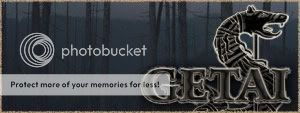If a soldier rested the shield on the ground, he would have to brace the top of the shield with his shoulder to avoid the problem Antisocialmunky describes.
The scutum was very long. The handle was in the middle and horizontal. Therefore, it had to be braced on the top and bottom at all times. If the user does not brace it properly, the leverage of the shield will turn against him.
Some prior post here proposed comparing the scutum to the riot police shield.
You can find a picture of a riot police shield, with handle, here:
http://www.armynavyshop.com/prods/rc1992.html
The handle is the determining factor here. The riot police shield is held like a hoplon. You slip your arm through a strap and grab the vertical handle on the other side. You keep your left elbow bent at 90 degrees, your arm in a horizontal position in front of you. The riot police shield is held like a hoplon and it is wielded like a hoplon. The riot police shield is in fact a rectangular hoplon.
You can see the handle of a scutum recovered from an archeological dig here:
http://www.myarmoury.com/feature_shield.html
The handle is horizontal. Furthermore, the handle is in the middle of the shield, unlike the handle for a riot police shield. The scutum could not be wielded like a riot police shield, because the handle forced you to grab the shield in a different way.




 Reply With Quote
Reply With Quote






 Proud Roman General
Proud Roman General 






 +
+ =
=





Bookmarks